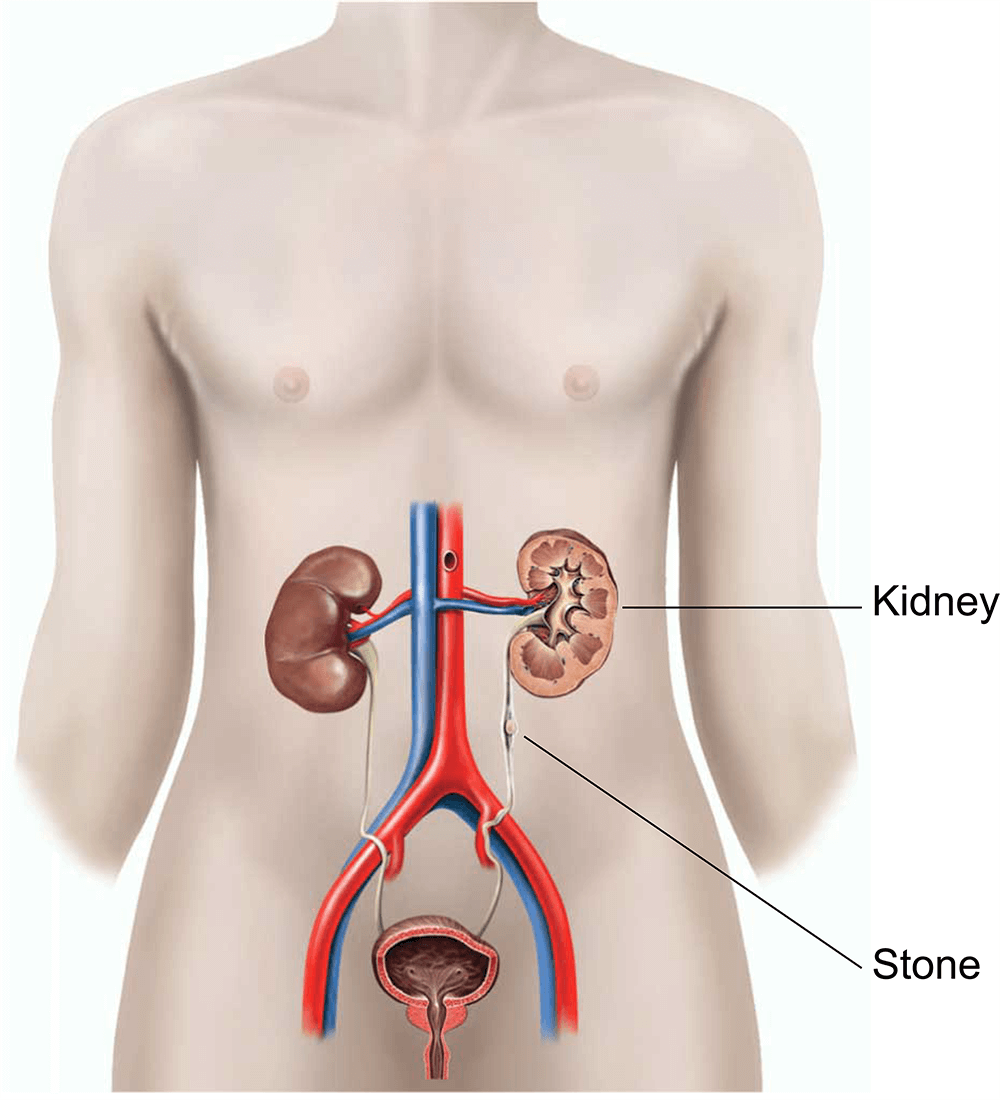Ureteroscopy
What is a ureteroscopy?
A ureteroscopy is an operation to treat stones in your kidneys and ureters (tubes that carry urine from your kidneys to your bladder). A ureteroscopy can also be performed to help diagnose problems in your kidneys and ureters such as a blockage or a tumour.
Sometimes a stone blocks your ureter, causing urine to build up in your kidney, increasing the risk of your kidney being damaged. A blocked ureter can cause a serious kidney infection. If both your ureters are blocked, or you have only one kidney that is working, you can develop kidney failure.

What are the benefits of surgery?
You should get relief from pain, and have less risk of infection or your kidney being damaged.
If your doctor is performing a ureteroscopy to help diagnose problems in your ureter or kidney, they may perform a biopsy or they may be able to treat the problem using the ureteroscope.
Are there any alternatives to a ureteroscopy?
Sometimes it is possible to pass a stone naturally in your urine.
An extracorporeal lithotripsy uses a device to pass energy through your skin to divide the stones into smaller fragments which are easier for you to pass.
It is possible to have open surgery which involves a cut on your side but there is a higher risk of complications.
What does the operation involve?
The operation is performed under a general or spinal anaesthetic. The operation usually takes about an hour.
Your surgeon will pass a rigid or flexible telescope (cystoscope) into your urethra (tube that carries urine from your bladder).
Your surgeon will pass a guidewire (thin flexible wire) down the cystoscope, into your bladder and then into the opening of your ureter. They will remove the cystoscope and, using the guidewire, will insert the ureteroscope into your ureter.
Your surgeon will use the ureteroscope to find the stone. They will often use a laser to break the stone into smaller pieces. Your surgeon will either leave the pieces to pass naturally or remove the stones using the ureteroscope. Sometimes they will insert a stent (tube) in your ureter to keep it open while it heals.
How can I prepare myself for the operation?
If you smoke, stopping smoking now may reduce your risk of developing complications and will improve your long-term health.
Try to maintain a healthy weight. You have a higher risk of developing complications if you are overweight.
Regular exercise should help to prepare you for the operation, help you to recover and improve your long-term health. Before you start exercising, ask the healthcare team or your GP for advice.
Speak to the healthcare team about any vaccinations you might need to reduce your risk of serious illness while you recover. When you come into hospital, practise hand washing and wear a face covering when asked.
What complications can happen?
Some complications can be serious and can even cause death.
General complications of any operation
- bleeding after the operation
- infection
- allergic reaction to the equipment, materials or medication
- chest infection
Specific complications of this operation
- Failure of the procedure, if there are technical difficulties inserting the ureteroscope into your ureter or if your surgeon cannot find a stone.
- Damage to your ureter.
- Narrowing of your ureter, due to scar tissue caused by the stone or damage caused by the ureteroscope.
- Blocking of your ureter caused by a piece from a stone shattered by a laser.
Consequences of this procedure
- pain
How soon will I recover?
You should be able to go home the same day, after you have recovered from the anaesthetic and passed urine.
Drink up to 3 litres of water a day to help you to pass urine and any pieces of shattered stones more easily.
Do not do strenuous exercise for at least 2 days. You should be able to return to work after about a week.
Regular exercise should help you to return to normal activities as soon as possible. Before you start exercising, ask the healthcare team or your GP for advice.
If you have a stent, your surgeon will usually be able to remove it after a few days but it may need to stay in place for a few weeks.
If your ureteroscopy was performed to help diagnose a problem, the healthcare team will tell you what was found and discuss with you any treatment or follow-up you need.
Summary
A stone in a kidney or ureter can cause severe pain, infection and kidney damage. A ureteroscopy should treat a stone and help to find out if you have any problems in your kidneys and ureters.
IMPORTANT INFORMATIONThe operation and treatment information on this page is published under license by Healthdirect Australia from EIDO Healthcare Australia and is protected by copyright laws. Other than for your personal, non-commercial use, you may not copy, print out, download or otherwise reproduce any of the information. The information should not replace advice that your relevant health professional would give you. Medical Illustration Copyright © Medical-Artist.com.
For more on how this information was prepared, click here.
Learn more here about the development and quality assurance of healthdirect content.
Last reviewed: September 2024














